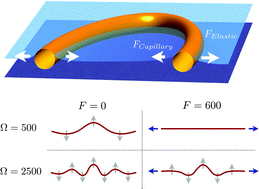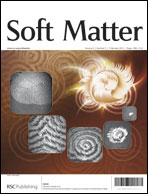Elastocapillary self-folding: buckling, wrinkling, and collapse of floating filaments
Abstract
When a flexible filament is confined to a fluid interface, the balance between capillary attraction, bending resistance, and tension from an external source can lead to a self-buckling instability. We perform an analysis of this instability and provide analytical formulae that compare favorably with the results of detailed numerical computations. The stability and long-time dynamics of the filament are governed by a single dimensionless elastocapillary number quantifying the ratio between capillary to bending stresses. Complex, folded filament configurations such as loops, needles, and racquet shapes may be reached at longer times, and long filaments can undergo a cascade of self-folding events.


 Please wait while we load your content...
Please wait while we load your content...